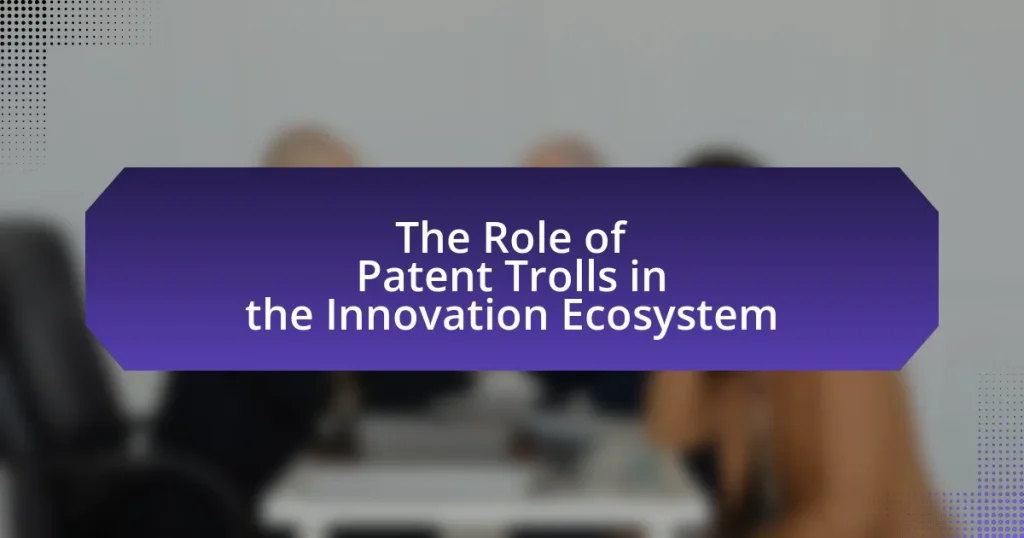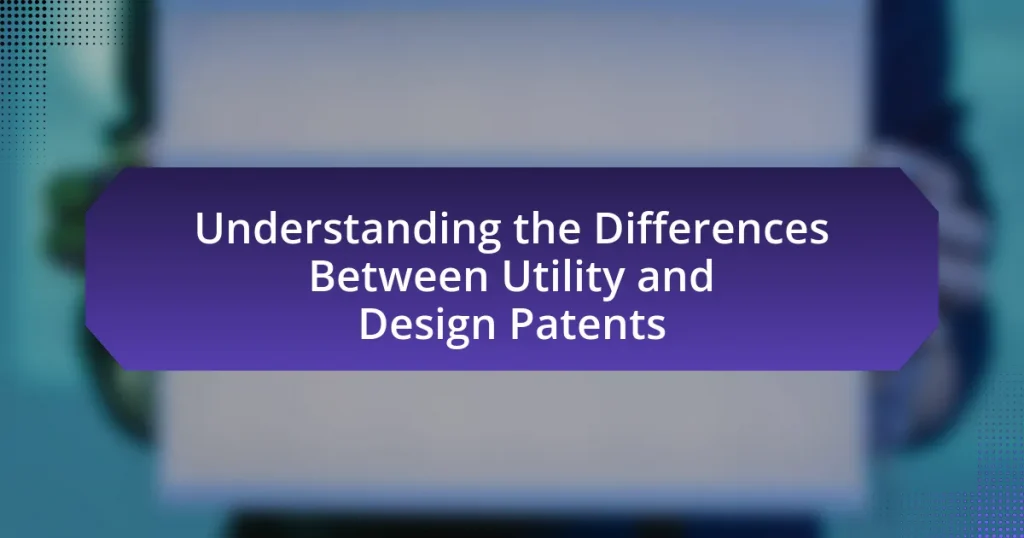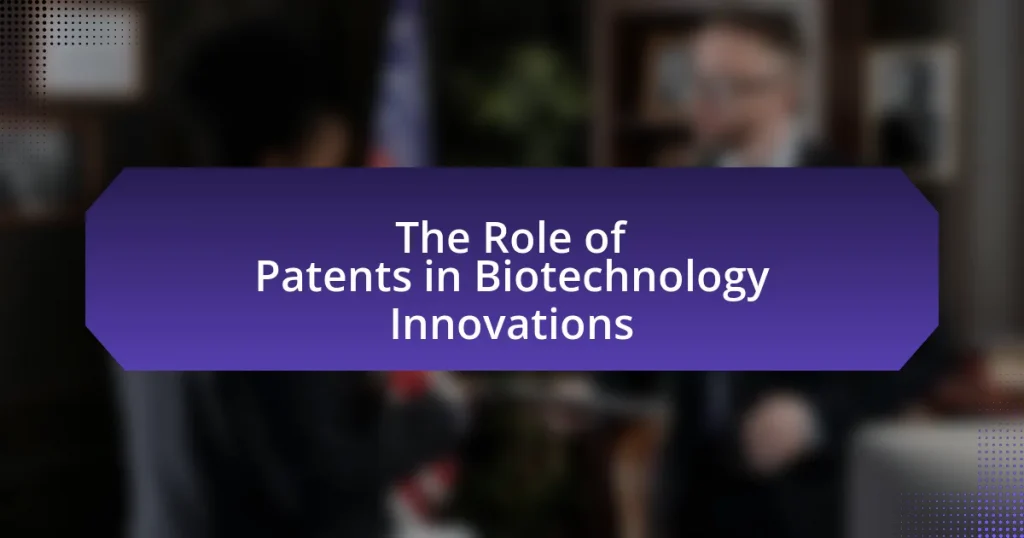The article examines the future of patents in the context of globalization, highlighting the increasing harmonization of patent laws and the need for international collaboration to support trade and innovation. It discusses the impact of globalization on patent systems, including challenges such as inconsistent enforcement and high costs, as well as the influence of technological advancements and international treaties on patent practices. Key trends shaping the patent landscape, such as the rise of artificial intelligence and open innovation, are analyzed, along with strategies for businesses to navigate the complexities of global patent regulations effectively. The article emphasizes the importance of a robust patent system in fostering innovation and economic growth in a competitive global market.

What is the Future of Patents in the Era of Globalization?
The future of patents in the era of globalization is characterized by increased harmonization of patent laws and greater international collaboration. As global markets expand, countries are recognizing the need for a unified approach to intellectual property rights to facilitate trade and innovation. For instance, the World Trade Organization’s Agreement on Trade-Related Aspects of Intellectual Property Rights (TRIPS) has set minimum standards for patent protection, encouraging nations to align their laws. Additionally, the rise of digital technologies and cross-border collaborations necessitates adaptive patent systems that can address challenges such as patent infringement and enforcement in multiple jurisdictions. This evolution aims to balance the interests of patent holders with public access to innovations, fostering a more integrated global economy.
How is globalization impacting the patent system?
Globalization is significantly impacting the patent system by increasing the complexity and scope of intellectual property rights across borders. As businesses operate internationally, they face diverse patent laws and regulations, which can lead to challenges in protecting innovations. For instance, the World Intellectual Property Organization (WIPO) reports that the number of international patent applications has surged, reflecting the need for harmonization in patent systems to accommodate global markets. This trend necessitates that companies navigate varying legal frameworks, which can complicate enforcement and lead to potential disputes over patent rights in different jurisdictions.
What are the key challenges faced by patent systems globally?
The key challenges faced by patent systems globally include inconsistent enforcement, high costs of obtaining and maintaining patents, and the rapid pace of technological advancement. Inconsistent enforcement arises from varying legal standards and practices across jurisdictions, leading to uncertainty for patent holders. High costs deter innovation, as small businesses and individual inventors often lack the resources to navigate complex patent processes. Additionally, the rapid pace of technological advancement outstrips existing patent frameworks, making it difficult to adequately protect new inventions. These challenges hinder the effectiveness of patent systems in promoting innovation and protecting intellectual property rights.
How does globalization influence patent laws across different countries?
Globalization influences patent laws across different countries by promoting harmonization and standardization of intellectual property regulations. As countries engage in international trade and investment, they often adopt similar patent frameworks to facilitate cross-border commerce and protect innovations. For instance, agreements like the Trade-Related Aspects of Intellectual Property Rights (TRIPS) established minimum standards for patent protection, compelling member countries to align their laws with global norms. This alignment can lead to increased foreign direct investment and technology transfer, as companies seek to operate in jurisdictions with robust patent protections. Additionally, globalization can create challenges, such as the risk of patent thickets and increased litigation, as companies navigate varying laws and enforcement mechanisms across different jurisdictions.
What trends are shaping the future of patents?
The future of patents is being shaped by trends such as the rise of artificial intelligence, increased globalization, and the shift towards open innovation. Artificial intelligence is transforming patent examination processes, enabling faster and more accurate assessments of patentability. Globalization is leading to harmonization of patent laws across jurisdictions, facilitating international protection for inventors. Additionally, open innovation encourages collaboration between companies and individuals, resulting in a more dynamic patent landscape. These trends reflect the evolving nature of innovation and the need for adaptive legal frameworks to support it.
How are technological advancements affecting patent applications?
Technological advancements are significantly accelerating the pace and complexity of patent applications. Innovations in fields such as artificial intelligence, biotechnology, and blockchain are leading to an increase in the number of inventions that require patent protection, thereby raising the volume of applications submitted to patent offices. For instance, the World Intellectual Property Organization reported a 5.2% increase in global patent filings in 2021, largely attributed to advancements in technology. Additionally, these advancements are also influencing the nature of patent claims, as inventors seek to protect increasingly sophisticated and interconnected technologies, which often leads to more extensive and detailed applications.
What role do international treaties play in the evolution of patents?
International treaties significantly influence the evolution of patents by establishing standardized legal frameworks that facilitate international cooperation and harmonization of patent laws. Treaties such as the Paris Convention for the Protection of Industrial Property and the Agreement on Trade-Related Aspects of Intellectual Property Rights (TRIPS) set minimum standards for patent protection, ensuring that inventors receive consistent rights across member countries. For instance, the TRIPS Agreement, adopted in 1994, mandates that all World Trade Organization (WTO) members provide patent protection for a minimum of 20 years, which has led to a more uniform global patent system. This standardization encourages innovation by providing inventors with the assurance that their intellectual property will be protected internationally, thus fostering a more collaborative and competitive global market.
Why is the future of patents important for innovation?
The future of patents is crucial for innovation because it shapes the incentives for inventors and companies to invest in research and development. A robust patent system encourages the creation of new technologies by granting exclusive rights to inventors, which can lead to significant financial returns. For instance, according to a study by the National Bureau of Economic Research, firms that actively utilize patents tend to invest 20% more in R&D compared to those that do not. This correlation highlights that a well-structured patent system not only protects intellectual property but also fosters a competitive environment that drives technological advancement and economic growth.
How do patents encourage or hinder innovation in a global market?
Patents encourage innovation in a global market by providing inventors exclusive rights to their inventions, which incentivizes investment in research and development. This exclusivity allows companies to recoup costs associated with innovation, leading to increased technological advancements. For instance, a study by the World Intellectual Property Organization (WIPO) found that countries with strong patent protections tend to have higher levels of innovation, as firms are more likely to invest in new technologies when they can secure their intellectual property. Conversely, patents can hinder innovation by creating barriers to entry for smaller firms and fostering monopolistic practices, which can stifle competition and limit the dissemination of new ideas. For example, in industries like pharmaceuticals, patent protections can lead to high prices and restricted access to essential medicines, ultimately slowing down overall innovation in healthcare solutions.
What are the implications of patent protection for startups and SMEs?
Patent protection provides startups and SMEs with a competitive advantage by safeguarding their innovations from unauthorized use, which is crucial for attracting investment and fostering growth. This legal protection encourages innovation by allowing these entities to secure exclusive rights to their inventions, thereby increasing their market value and potential revenue streams. According to the World Intellectual Property Organization, startups that hold patents are more likely to receive venture capital funding, as patents signal the viability and uniqueness of their products. Furthermore, patent protection can enhance collaboration opportunities, as companies are more willing to partner with firms that have secured their intellectual property rights, thus facilitating access to new markets and technologies.
How can stakeholders adapt to changes in the patent landscape?
Stakeholders can adapt to changes in the patent landscape by actively monitoring legal developments and engaging in strategic collaborations. By staying informed about new patent laws, international treaties, and case law, stakeholders can anticipate shifts that may affect their intellectual property rights. For instance, the implementation of the Unified Patent Court in Europe has altered enforcement strategies, prompting stakeholders to reassess their patent portfolios and litigation approaches. Additionally, forming alliances with other entities can enhance their ability to navigate complex patent environments, as seen in the rise of patent pools and consortiums that facilitate shared access to technologies.
What strategies can businesses employ to navigate the global patent system?
Businesses can employ several strategies to navigate the global patent system effectively. First, they should conduct comprehensive patent landscape analyses to identify existing patents and potential competitors in their field, which helps in making informed decisions about innovation and patenting. Additionally, businesses can utilize international treaties, such as the Patent Cooperation Treaty (PCT), to streamline the patent application process across multiple jurisdictions, reducing costs and time.
Furthermore, engaging with local patent attorneys in target markets ensures compliance with specific national laws and practices, enhancing the likelihood of successful patent grants. Companies should also consider developing a robust intellectual property strategy that includes regular monitoring of patent portfolios and potential infringements, which is crucial for maintaining competitive advantage.
These strategies are supported by the fact that businesses that actively manage their patent portfolios can increase their market share and revenue, as evidenced by a study from the European Patent Office, which found that companies with strong patent strategies tend to outperform their peers in innovation and financial performance.
What are the best practices for securing patents in a globalized world?
The best practices for securing patents in a globalized world include conducting thorough prior art searches, filing patents in multiple jurisdictions, and utilizing international treaties such as the Patent Cooperation Treaty (PCT). Conducting prior art searches ensures that the invention is novel and non-obvious, which are critical criteria for patentability. Filing in multiple jurisdictions allows inventors to protect their intellectual property in key markets, as patent laws vary significantly across countries. The PCT streamlines the process of filing patents internationally, providing a unified procedure that can save time and resources. These practices are essential for maximizing the protection and commercial potential of inventions in a competitive global landscape.
How can companies ensure compliance with international patent laws?
Companies can ensure compliance with international patent laws by implementing a robust intellectual property management system that includes regular audits, employee training, and legal consultations. This system should be designed to monitor patent filings and enforce compliance with the regulations of different jurisdictions. For instance, the World Intellectual Property Organization (WIPO) provides guidelines and resources that help companies navigate the complexities of international patent laws, ensuring that they adhere to the legal requirements in various countries. Additionally, companies can utilize patent databases to track existing patents and avoid infringement, thereby reinforcing their compliance efforts.
What resources are available for understanding global patent regulations?
Comprehensive resources for understanding global patent regulations include the World Intellectual Property Organization (WIPO) database, which provides access to international treaties, guidelines, and patent laws of member countries. Additionally, the European Patent Office (EPO) offers extensive documentation on European patent regulations and procedures. The United States Patent and Trademark Office (USPTO) provides resources specific to U.S. patent law, while the Patent Cooperation Treaty (PCT) system facilitates international patent applications. Academic journals and publications, such as the “Journal of Intellectual Property Law & Practice,” also offer insights and analyses on evolving patent regulations globally. These resources collectively support a thorough understanding of the complexities of global patent regulations.



